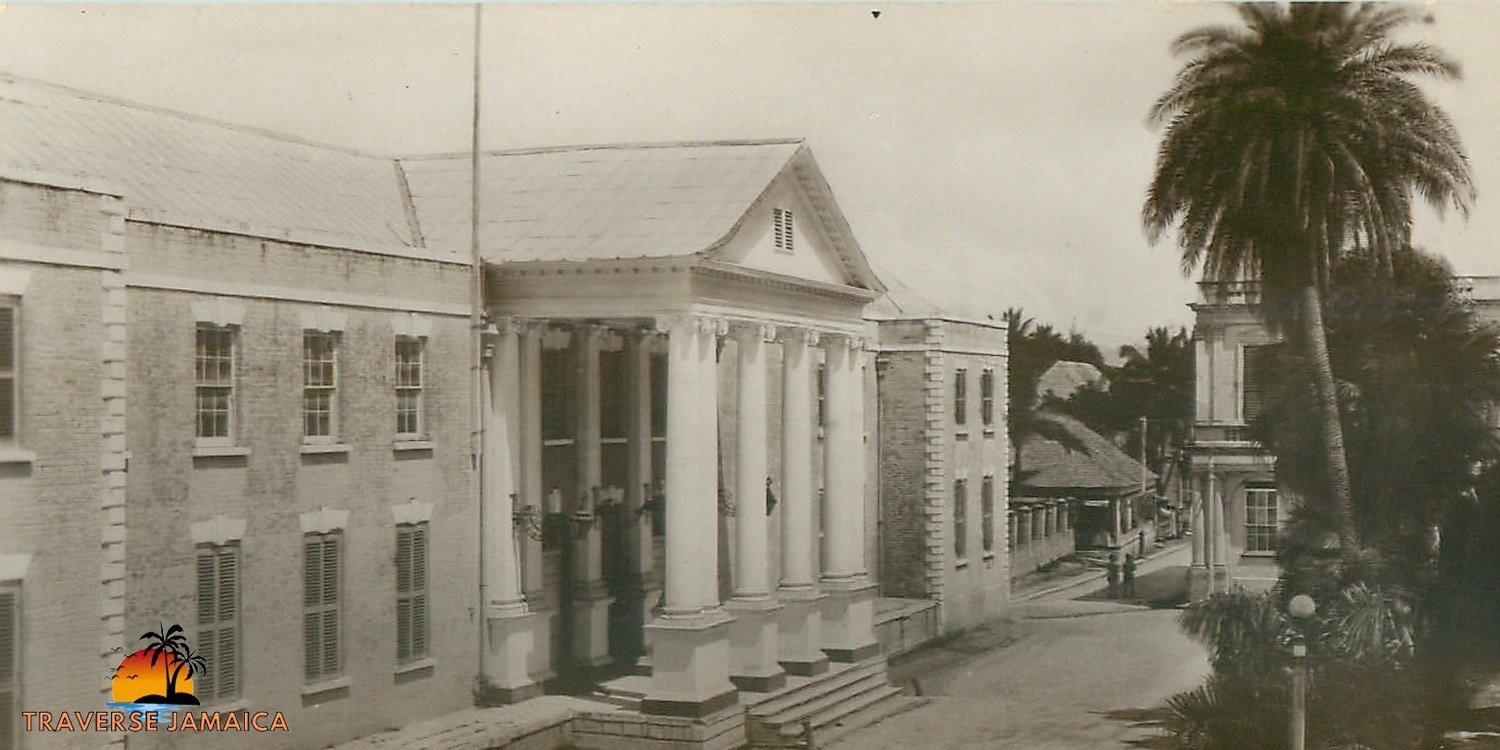The Old King’s House in Spanish Town, Jamaica, stands as a symbol of the island’s colonial history and resilience. Once the grand residence of Jamaica’s governors, this historic building is now a poignant reminder of both the architectural grandeur of the colonial era and the turbulent events that shaped Jamaica’s past. Although a fire devastated the structure, leaving only its façade, the Old King’s House continues to be a place of historical significance, attracting visitors who wish to understand Jamaica’s rich cultural and colonial heritage.
The Beginnings of the Old King’s House
Originally built in 1762, the Old King’s House served as the residence for the governors of Jamaica during the British colonial period. Its location in Spanish Town, then the island’s capital, placed it at the heart of political and social life. The building was constructed during the reign of King George III and symbolized British authority and influence over the island. The house was one of the finest examples of Georgian architecture in the Caribbean, featuring classic columns, arched windows, and expansive gardens, which served as both a private residence and a public symbol of colonial governance.
Architectural Grandeur and Symbolism
Designed with elegance and grandeur, the Old King’s House showcased typical Georgian architectural elements such as symmetry, grand columns, and balanced proportions. The residence was often admired for its imposing façade, with intricate stonework and wooden features that added to its aesthetic appeal. Internally, the house was lavishly decorated with furniture and art that echoed European tastes, and its halls were frequently used to host distinguished guests, including visiting dignitaries and colonial officials.
The building’s architectural significance extended beyond its appearance; it embodied the colonial power structure that governed Jamaica for centuries. As the residence of governors, it was the center of decision-making and governance, representing British control over Jamaica’s people and resources. In this way, the Old King’s House became a visual reminder of the colonial influence that would shape Jamaica’s development and identity.
The Tragic Fire and the Loss of the Old King’s House
In 1925, the Old King’s House suffered a devastating fire that nearly destroyed the building. Despite efforts to save it, only the façade survived, leaving a haunting yet beautiful ruin that continues to draw visitors. The fire marked the end of the Old King’s House as a residence and official building, and its loss signified a shift in Jamaica’s architectural and historical landscape. While Spanish Town remained a place of historical importance, the capital had already moved to Kingston in 1872, lessening the Old King’s House’s centrality in Jamaican politics.
The fire’s cause remains a topic of interest and mystery for historians, with theories suggesting anything from structural issues to accidental ignitions. Today, the remnants of the Old King’s House stand as a stark reminder of both the fragility of heritage buildings and the importance of preserving history.
The Significance of the Old King’s House Today
Though only the façade remains, the Old King’s House holds tremendous historical and cultural significance. The structure continues to attract both locals and tourists who seek to connect with Jamaica’s colonial past and explore Spanish Town’s role in the island’s development. The building is part of the Spanish Town Historic District, a protected area that includes other notable sites like the Spanish Town Square and the Rodney Memorial. Efforts have been made to preserve what is left of the Old King’s House, recognizing it as a critical piece of Jamaican heritage.
As a ruin, the Old King’s House speaks to the resilience of Jamaican culture and history, standing against time and elements to tell the story of an era gone by. The façade’s survival is symbolic, reflecting both the endurance of Jamaican culture and the transformative nature of its history, from colonial rule to independence.
The Legacy of the Old King’s House and Future Preservation Efforts
The Old King’s House remains an essential educational and historical site, sparking interest among historians, students, and tourists. Efforts to preserve the site are part of a larger movement to maintain Jamaica’s historical landmarks, acknowledging their role in shaping the nation’s identity. The government and cultural preservation organizations have recognized the value of the Old King’s House as a means of teaching future generations about the island’s colonial past, governance, and architecture.
Preserving the Old King’s House also offers opportunities for community engagement, allowing locals and visitors to participate in conservation efforts. By maintaining the remnants of this iconic building, Jamaica honors its past while embracing the possibilities for cultural tourism and heritage education. The façade stands not just as a relic but as a tribute to the country’s complex history, bridging the gap between Jamaica’s colonial experience and its journey toward independence.
Conclusion
The Old King’s House in Spanish Town, though now a ruin, is a treasure of Jamaica’s historical landscape. Its surviving façade continues to captivate and inspire, offering a window into the island’s colonial period and its architectural beauty. While the building may no longer stand in its entirety, its legacy endures, connecting Jamaicans and visitors alike to the resilience, history, and heritage of the island. Through ongoing preservation efforts, the Old King’s House will continue to be a significant landmark, serving as both a reminder of Jamaica’s colonial past and a testament to its enduring culture and identity.









